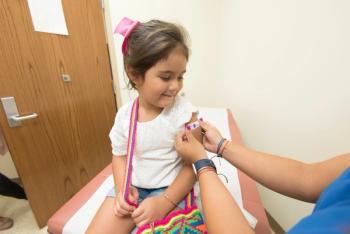
Population-Based Surveillance Provides More Information on Zika-Related Birth Defects
According to new data, the prevalence of birth defects potentially related to Zika virus infection increased fourfold from January through March 2017 when compared with January to March 2016.
During the 2015-16 Zika virus outbreak, population-based birth defect surveillance programs around the United States were quickly adapted to monitor birth defects related to Zika infection during pregnancy.
In August 2018, the US Centers for Disease Control and Prevention (CDC) Morbidity and Mortality Weekly Report (MMWR)
Now, a new report in the
Jurisdictions were categorized according to 3 tiers: widespread local transmission of Zika virus, limited local transmission of Zika virus, and no local transmission of Zika virus.
The investigators analyzed population surveillance data from 22 states. A total of 2,004,630 live births were evaluated for birth defects and neurodevelopmental abnormalities. The study team identified 3359 infants and fetuses with birth defects potentially related to Zika virus infection during pregnancy from January 1, 2016 through June 30, 2017.
Of the 3359 infants and fetuses, 2813 had brain abnormalities and/or microcephaly. Eye abnormality without mention of brain abnormality was reported in 546 live births.
The prevalence of birth defects possibly related to Zika virus infection was compared with a reference period of January through March 2016, which featured an incidence 1.3 per 1000 live births.
In jurisdictions with widespread local transmission of Zika virus, prevalence of birth defects possibly related to Zika virus infection was significantly higher from July 2016 through March 2017 (July—September 2016 = 3.0 per 1000 live births, October–December 2016 = 4.0, January-March 2017 = 5.6).
Prevalence of birth defects in areas with widespread local transmission was highest in February 2017 (7.0), 6 months after the August 2016 peak of infections in these regions
Both the peak of infection incidence and heightened awareness surrounding the need for screening among clinicians inform when the most birth defects potentially related to Zika virus will be reported.
“This is consistent with other findings regarding the time between the peak of a Zika virus outbreak and recognition of an increase in potentially Zika-related birth defects,” authors wrote of the timing.
In areas with limited local transmission, there was still a 20% increase of birth defect prevalence during the October through December 2016 period, though the increase was not statistically significant. In areas without any local transmission, there was not an increase in birth defects related to Zika virus observed.
The investigators noted that their analysis may mask some extent of prevalence in areas with limited local transmission such as Florida or Texas, due to the size of these states relative to localized transmission areas.
Information collected by birth defect surveillance programs during the 2015-16 Zika virus outbreak may allow public health officials and clinicians to better tailor their interventions in future public health emergencies pertaining to pregnant women and infants.
“Health departments can use these data to inform referral services for affected infants and program planning. These findings underscore the important role of birth defects surveillance programs in preparing for emerging public health threats to pregnant women and infants,” the authors of the report concluded.
Newsletter
Stay ahead of emerging infectious disease threats with expert insights and breaking research. Subscribe now to get updates delivered straight to your inbox.























































































































































































































































































